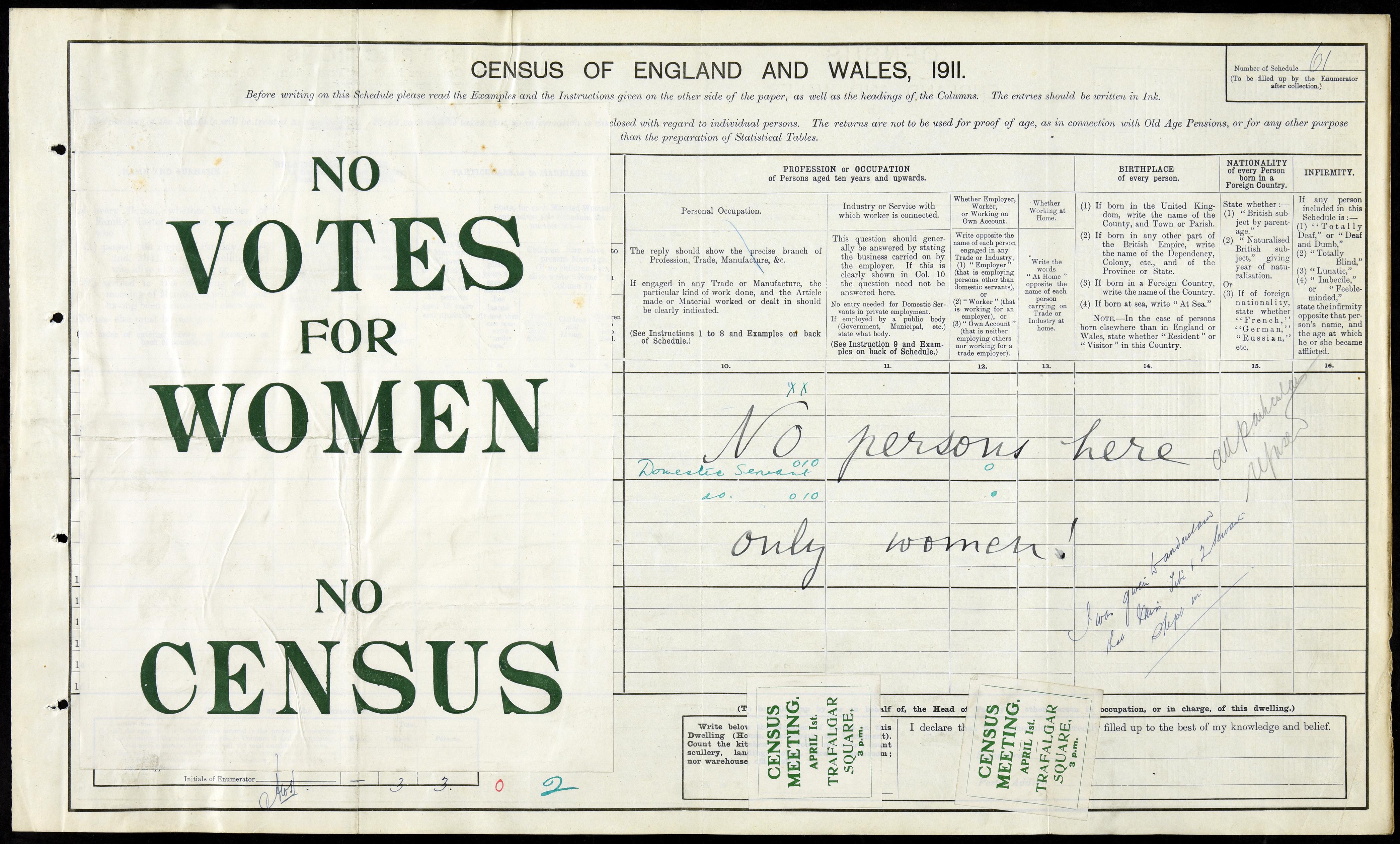Census Protest for Women's Suffrage

Annotation
This 1911 census form showcases one method of peaceful civil disobedience done by supporters of women’s suffrage in Britain during the early 20th century. One duty modern government performs is the recording of the census every ten years (check out this 1891 British census for another perspective). This data is essential for understanding the demographics of a country, which can impact other functions such as representation, taxes, and social relief. Because of the importance of the census, the suffragists (non-militant supporters of women’s suffrage) and suffragettes (militant supporters of women’s suffrage) knew they could make a statement by refusing to participate. Since the government was counting citizens and citizens are supposed to (at least in liberal democracies) have civil rights, British women did not view themselves as citizens of the state. The denial of voting rights was a denial of full citizenship in their eyes. To protest, these women refused to fill out the 1911 census, disrupting the normal flow of bureaucracy. This is just one example of how supporters of women’s suffrage used peaceful civil disobedience to voice their concerns and discontent to the British government and public.
Transcription
Large sticker, left: ‘No votes for women No Census’
Small stickers, bottom: ‘Census meeting – April 1st. – Trafalgar Square, 3 p.m.’
Written protest: No persons here only women!
Census official’s notes:
xx Domestic servant, do.
All particulars refused.
I was given to understand that Miss Jite[?] + 2 servants slept in.
*Transcript from National Archives*
Credits
Annotated by Savannah Scott, George Mason University
Source from the British National Archives at https://www.nationalarchives.gov.uk/education/resources/suffragettes-on-file/census-boycott/